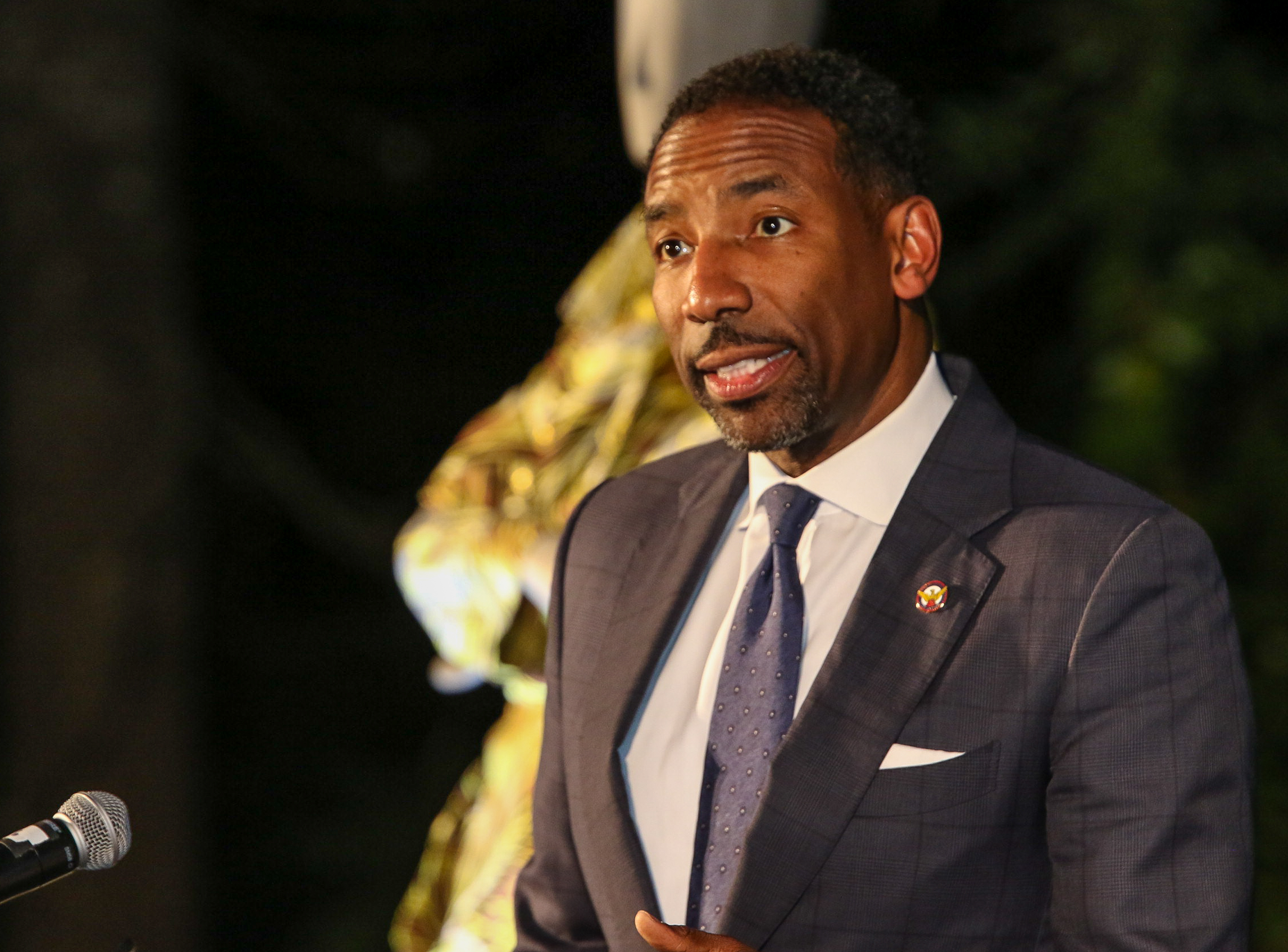If you sat in on Sharon McGreevey's class at Menlo Park Terrace Elementary School in Woodbridge, N.J., you'd recognize a familiar set of characters from your own third-grade days. There's the boy who's always waving his hand in the air; he loves to be the first to answer questions. Then there's the quiet girl who slinks down in her seat so she doesn't have to read aloud. There's another girl who gives long, meandering responses when she's called on and a boy who looks like he could have used a few more hours of sleep. So here's a pop quiz: which one is a typical 8-year-old?
All of the above and none of the above. That's the basic philosophy behind the work of Dr. Mel Levine, a pediatrician at the University of North Carolina who's on a mission to revolutionize the way teachers like McGreevey look at kids. Levine says the old, one-size-fits-all approach allows too many youngsters to fall through the cracks--kids who may be perfectly intelligent but struggle in school. Instead, he helps teachers understand how different children think so that they can tailor their teaching to each student. "There's a huge amount of knowledge about how learning works that hasn't gotten to the front lines, the teachers," says Levine, 60. Armed with new science about how kids' brains develop, he says a teacher can, for example, help a disorganized child remember his homework or show a socially awkward child how to work in a group.
At a time when many districts are grappling with how to rebuild their teacher ranks, a growing number of educators think Levine is pointing the way. He's already initiated thousands of teachers like Sharon McGreevey through his weeklong Schools Attuned training program, which costs $1,200. A PBS documentary about him is in the works, as is a 22-volume video series scheduled for release this winter. He's got two new books about learning styles coming out and a sophisticated Web site (allkindsofminds.org). And he has big money behind him. In 1999, discount broker Charles Schwab announced a five-year, $10 million challenge grant to the institute. Schwab's backing is attracting other big donors as well. Right now most of Levine's efforts are concentrated on elementary- and middle-school children, but there's a pilot program for high-schoolers too. Although he's eager to talk about his ideas, Levine seems slightly uncomfortable in the spotlight. His small, unpretentious office near the university shows that he's clearly marching to his own drummer. Virtually every inch of wall space is filled with prints of birds (mostly geese, his particular passion); the only human image is of his wife, Bambi, who helps edit all his books, and even she is shown cuddling a cat and with a horse. At their farm about 45 minutes away from the university, the residents include 240 geese, 40 pheasants, 19 peacocks, 10 swans, 10 donkeys, a horse and a mule.
Levine's interest in learning problems dates back to his childhood on New York's Long Island. A good student, he nonetheless felt humiliated by his lack of success at sports. It was his first exposure to the idea that no one's good at everything. He came back to the notion again and again in college at Brown, as a Rhodes scholar and at Harvard Medical School. For several years during the Vietnam War, Levine was the school doctor at Clark Air Force Base in the Philippines--an experience, he says, that really opened his eyes to the many ways kids learn. Since then his vocation has been merging the two worlds that fascinate him: medicine and education. He was running the outpatient clinic at Children's Hospital in Boston when North Carolina recruited him in the mid-'80s. In addition to his work at the university, Levine has treated hundreds of children with learning problems--many of whom he's followed for years as they make their way through school.
Levine bases his teacher training on a synthesis of all these experiences. To help teachers understand what science has discovered about the brain, he's organized current thinking about learning into eight categories that he calls "neurodevelopmental constructs," which include attention, language, memory, neuromotor function and social cognition. Within these, there are subcategories to convey the brain's complexity. These constructs interact differently in each individual brain to create unique ways of thinking, what Levine calls a "learning profile." It's a balance sheet of the child's strengths and weaknesses.
The training sessions include lectures by Levine at one of nine regional sites and workshops with people trained by him where the teachers spend a lot of their time poring over case studies of kids. They look for clues to what might be wrong. Does the child learn better by listening than reading? Does he need to sit closer to the teacher so he doesn't get distracted? The goal is to give educators the tools they need to diagnose a kid's talents and problems, just the way a pediatrician analyzes a patient. In Levine's view, the more specific the diagnosis, the more specific the remedy and the better the chances of success. "What we label are some things called 'observable phenomena'," he says. "Teachers more than anyone else have access to observable phenomena. Schools Attuned gives you a language to talk about this."
Here's how it might work. Every teacher's been puzzled by a kid who constantly looks up and down when he's copying something from the board. And even then, he'll miss part of what he should be writing down. An untrained teacher might accuse him of cheating because he's looking at another student's paper to fill in the blanks or penalize him for not completing his work. But a teacher who had taken Levine's course would recognize that the youngster had short-term memory problems. Some solutions: let him work with another kid or give him a copy of what he needs already written down. Above all, Levine says, tell him exactly what the problem is, a process Levine calls "demystification." "The more we can impart specificity to the kid, the more they are going to be upbeat and feel in control," he says.
Many educational researchers think Levine is a provocative theoretician whose approach could be the wave of the future. "Mel is a brilliant clinician," says Dr. G. Reid Lyon, chief of the child-development and -behavior branch of the National Institute of Child Health and Human Development. "He can sit with a patient and tease apart all the things that might be influencing the youngster's development, especially in the academic areas." And, Lyon adds, "I think he's been a tremendous influence on education with his message that learning is complex, and that many kids learn differently." People who train classroom teachers also say Levine represents a major shift in education. "Teachers have to become more diagnostic and prescriptive," says Art Levine (no relation), the head of Columbia University's Teachers College. "At this moment, philosophy is central to education. Equally important in the future will be biology"--how the brain works.
But his critics and even some of his fans worry that Levine may be trying to do too much too soon. They say that with all the public pressure on schools, his ideas could be embraced as the next quick fix. There is also concern that he might draw money and attention away from children with the most severe problems or from proven programs. "His concepts and the way they are described and presented still have to be tested for validity," cautions Lyon. "You need evidence that people should trust this stuff." Much of that evaluation is still in progress. Rita O'Sullivan, an expert on testing at the University of North Carolina, has been overseeing a three-year study of how well his approach trains teachers. The results indicate that in the first year of the study, teachers were confused by the medical jargon although they believed the information would ultimately help them do a better job. Since then, the training has been streamlined and teachers give it much higher marks. But its effect on student achievement is still untested.
No one--least of all Levine--thinks it's easy to understand the process of learning. He's just not willing to wait for a perfect system when there are so many kids who need help now. And, as schools push to raise standards, it's increasingly important to make sure no one falls behind, he says. Levine likes to think of himself as an "academic entrepreneur" and he acknowledges that he's a little bit of a maverick in his world. "Some members of the scientific community are not respectful of Mel Levine," he concedes. He knows what they might say about the way he's translated brain research for nonscientists: "Here comes Mel Levine, the scientific slob who takes big swaths, cutting and pasting a model together."
That model can seem rather daunting at first--even to experienced educators. Sharon McGreevey's principal, John Ingemi, took Levine's course in the summer of 1998. Although he admits that his head was "spinning" when he first heard the eight constructs, he was impressed with the way Levine "put everything together" and created a model that connected brain science to education. He came away determined to create a school as close as possible to Levine's ideal. With money from private foundations, he ultimately sent all 25 of his classroom teachers to Levine's training, along with the nurse and the music and gym teachers. Since he started using Levine's work, Ingemi said he and his teachers have been able to help many childrenin the classroom who might otherwise have been referred to remedial services.
McGreevey, a teacher for 12 years, says that when she took the course last year, it "gave me a new map." Her thick Schools Attuned notebook has become a kind of classroom bible that she refers to many times each week. She shares that information with her students, trying to help them understand the process of learning as they make their way through reading and math. One afternoon last week, the kids clearly identified with the case study they were reading about in Levine's book, "All Kinds of Minds." The subject was a boy named Eddie, who was popular and very creative but fidgeted when he should have focused on school. "When Eddie did sit at his desk, his body often looked all twisted up," McGreevey read aloud. "You'd think he was trying to tie his legs in knots... At times like this, Eddie looked like a living pretzel!"
By this time, McGreevey's room was filled with tiny contortionists as virtually every child in the class unconsciously adopted some version of Eddie's unusual posture. The class talked about how Eddie's body reflected his sometimes disorganized mind. One girl revealed that she tapped her head when she found her thoughts drifting in class. A boy boasted that he could keep his mind on several things at the same time. "I have four sets of eyes," he explained. "Two here" (touching his eyelids) "and two in here" (tapping the top of his head). Somewhere, Mel Levine was smiling.
Uncommon Knowledge
Newsweek is committed to challenging conventional wisdom and finding connections in the search for common ground.
Newsweek is committed to challenging conventional wisdom and finding connections in the search for common ground.





